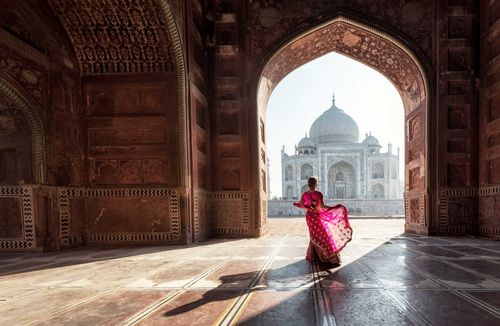Where to shop
Quite a few items sold in tourist areas are made elsewhere and, needless to say, it’s more fun (and cheaper) to pick them up at source. India is awash with street hawkers, often very young kids. Although they can be annoying and should be dealt with firmly if you are not interested, do not write them off completely as they sometimes have decent souvenirs at lower than shop prices and are open to hard bargaining.
Virtually all the state governments in India run handicraft “emporia”, most with branches in the major cities. Delhi. Mumbai, Kolkata, Chennai, Bengaluru and Patna also have Central Cottage Industries Emporiums. Goods in these emporiums are generally of a high quality, even if their fixed prices are a little expensive, and they are worth a visit to get an idea of what crafts are available and how much they should cost.
Bargaining
Whatever you buy (except things like food, tickets and other daily items), you will almost always be expected to haggle over the price. Bargaining is very much a matter of personal style, but should always be lighthearted, never acrimonious. There are no hard and fast rules – it’s really a question of how much something is worth to you. It’s a good plan, therefore, to have an idea of how much you want to pay. Bid low and let the shopkeeper argue you up. If they’ll settle for your price or less, you have a deal. If not, you don’t, but you’ve had a pleasant conversation and no harm is done.
Don’t worry too much about the first quoted prices. Some people suggest paying a third of the opening price, but it really depends on the shop, the goods and the shopkeeper’s impression of you. You may not be able to get the seller much below the first quote; on the other hand, you may end up paying as little as a tenth of it. If you bid too low, you may be hustled out of the shop for offering an “insulting” price, but this is all part of the game, and you’ll no doubt be welcomed as an old friend if you return the next day. More often, however, if you start to walk away, the price will magically come down, so that’s a useful tactic.
“Green” tourists are easily spotted, so try and look like you know what you are up to, even on your first day, or leave it till later; you could wait and see what the going rate is first.
Haggling is a little bit like bidding in an auction, and similar rules apply. Don’t start haggling for something if you know you don’t want it, and never let any figure pass your lips that you are not prepared to pay – having mentioned a price, you are obliged to pay it. If the seller asks you how much you would pay for something and you don’t want it, say so.
Sometimes rickshaw and taxi drivers stop unasked at shops where they get a small commission simply for bringing customers. In places like Jaipur and Agra where this is common practice, tourists sometimes even strike a deal with their drivers – agreeing to stop at five shops and splitting the commission for the time wasted. If you’re taken to a shop by a tout or driver and you buy something, you pay around fifty percent extra. Stand firm if you have no appetite for such shenanigans. If you want a bargain, shop alone, and never let anybody on the street take you to a shop – if you do, they’ll be getting a commission and you’ll be paying it.
Crafts galore
No country in the world produces such a tempting array of arts and crafts as India. Intensely colourful, delicately worked, exquisitely ornate and immensely varied, India’s crafts have the added advantage of being amazingly inexpensive. Every part of the country has its specialities – textiles in Rajasthan, metalwork in Karnataka, carpets in Kashmir, thangkas in Ladakh, leatherware in Maharashtra and batik in Orissa – but everywhere you’ll see beautiful things that you’ll find hard to resist buying. Whether it’s sumptuous fabrics, intricate carvings or garish knick-knacks, India offers a feast of artistic creations that you’ll want to gorge on.














